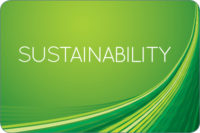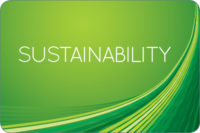In February 2013, Tyson Foods will release its fourth sustainability report. Very few people know that, with the exception of our first report, our sustainability reports have been developed by Tyson team members. Every word and artistic element comes from the mind and hands of a team member.
We depend on the support of team members in Audit and Compliance; Human Resources; Food Safety and Quality Assurance; Animal Well-Being; Environmental, Health, and Safety Services; International; Research and Development; Investor Relations; Purchasing and Sourcing; Legal; and External Relations when developing our sustainability reports. I believe it’s this team approach that allows us to tell our story our way, with our style, and in a manner that aligns with our Core Values.
As Tyson Foods wraps up and prepares for the release of its next sustainability report, I couldn’t pass up the opportunity to share a few “lessons learned.” Whether you are considering writing a sustainability report, are just getting started, or are halfway done, the following are tips that can help ensure your report adequately represents your company and meets the needs of your target audience.
- Clearly Define Your Report Content. Before you begin writing, a determination should be made about report content. Meet with your senior leadership team and key business departments to identify the issues of greatest concern and strategic importance to your company. Take time to identify what your competitors are saying about key issues. Formally engage with external stakeholders to develop an understanding of their concerns and what they would like to see in a sustainability report. Consider referencing recognized sustainability reporting guidelines such as those developed by the Global Reporting Initiative. Defining and setting an outline for the content of your report before you begin writing will ensure your report is representative of key sustainability issues applicable to your company and is aligned with stakeholder concerns and expectations.
- Agree in Advance on Your Level of Transparency. A sustainability report is a great vehicle for talking about your company’s progress toward being a responsible and sustainable organization. Much like defining your report content however, a decision should be made in advance on what level of transparency your company is ready for. Sustainability is a process of continual improvement. Continual improvement brings opportunities to celebrate wins, and it brings challenges that will require a company to stop, recalibrate, and try again with their sustainability strategy. I believe discussing the challenges and the action plan for addressing them builds trust with stakeholders. Establish an agreed upon level of transparency that provides balance between the successes and failures, so that the credibility of your report is not called into question.
- Engage Your Subject-matter Experts. While I lead the development of Tyson Foods’ sustainability reports, I do not serve as the subject-matter expert for the programs, procedures, objectives and targets detailed in our reports. For example, I work with Dr. Rick Roop, Tyson Foods’ SVP of Food Safety and Quality Assurance (FSQA) and his team when developing the FSQA section of our report. Subject-matter experts know the details of where a company has been and where it is going regarding specific programs. They are able to provide data and facts around sustainability performance indicators. They know the specifics of your company’s position on key stakeholder concerns and will be able to summarize these positions in a manner stakeholders understand. A single point of contact should serve as the “gatekeeper” for your sustainability reporting process; but avoid silos by allowing your subject-matter experts to provide the details surrounding their accomplishments and opportunities for improvement.
- Cross Your t’s and Dot Your i’s. Let’s face it — once you publish a sustainability report, it’s eternal. Someone somewhere will always have a copy of your report. Therefore, you should check and recheck all your facts to ensure they are accurate. Financial statements, press releases and other official company statements are great resources for ensuring the accuracy of the data shared in your report. I also recommend you partner with your company’s legal team to develop a “fact-check” process. At Tyson Foods, we maintain a Web site of documentation supporting statements and data presented in our reports. Before a report is published, it undergoes an extensive review, in which our legal team performs a fact-check by cross-referencing the data in the report with the supporting documentation on our Web site. Although this can be an intense process and may seem like “overkill” to some, our legal team brings insights and questions to the table that always results in a more accurate and factual report.
- Dress Your Report Like Your Company. Just as a company is unique, so should be its sustainability report. At Tyson Foods, I am fortunate to have access to an internal corporate-communications team that helps me ensure our sustainability reports have the “Tyson Style.” We use photos, stories and quotes from our team members as appropriate. We find ways to illustrate key points and data with tables, charts and call-outs our stakeholders can easily understand. This team helps our company maintain an online version of our report as well as a full-report and an executive summary that both can be printed. From paper to Internet, our sustainability reports read, look and feel like Tyson Foods.
In addition to these tips, make sure you:
- Set and adhere to an agreed upon timeline, noting that you will often find yourself in a position where you have to decide to wait things out or drop them until the next report;
- Develop a plan to formally share and promote the release of your report that includes the use of existing communication tools such as Web sites, social media, annual reports and marketing materials; and
- Track progress and results throughout the year, not just at report time; finding out at the last minute that you didn’t meet a goal leaves no time to make adjustments in your strategy.
Truth be told, the first sustainability report is always the hardest. As your reporting process matures, the bumps in the road become fewer, and the report begins to grow on its own. I wouldn’t say we’ve perfected the reporting process at Tyson Foods, but the rewards now far outweigh the hurdles.








Report Abusive Comment